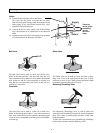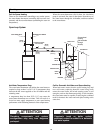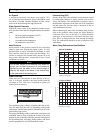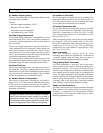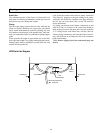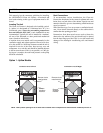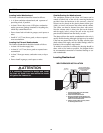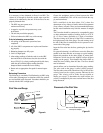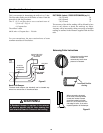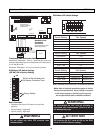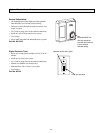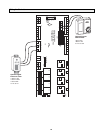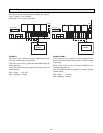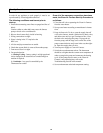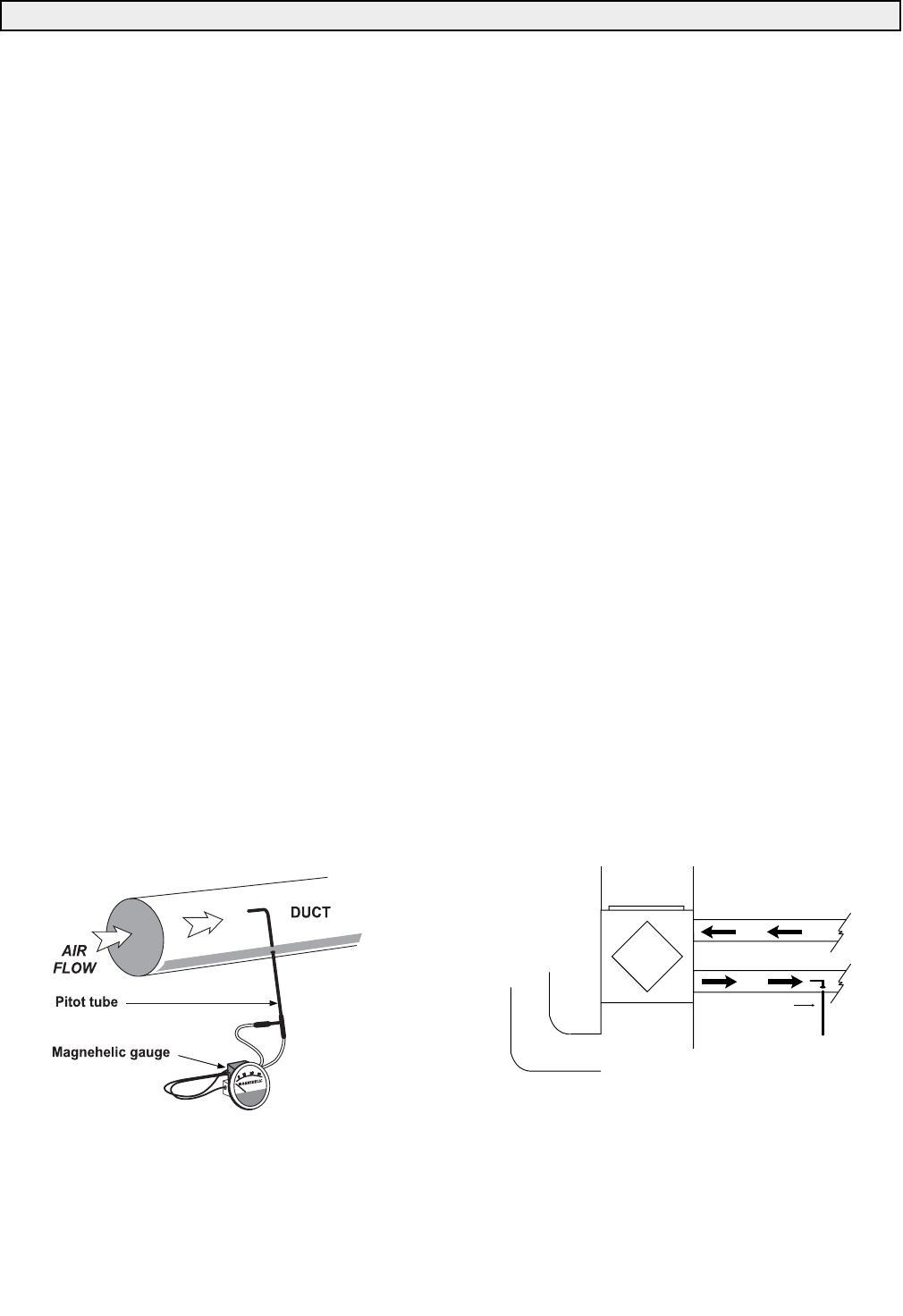
It is necessary to have balanced air flows in an HRV. The
volume of air brought in from the outside must equal the
volume of air exhausted by the unit. If the air flows are not
properly balanced then:
• The HRV may not operate at its
maximum efficiency
• A negative or positive air pressure may occur
in the house
• The unit may not defrost properly
• Failure to balance the HRV may void warranty
Prior to balancing, ensure that:
1. All sealing of the ductwork system has been
completed.
2. All of the HRV's components are in place and function-
ing properly.
3. Balancing dampers are fully open.
4. Unit is on high speed.
5. After taking readings of both the stale air to the HRV
duct and fresh air to the house duct, the duct with the
lower CFM ([L/s] velocity) reading should be left alone,
while the duct with the higher reading should be
dampered back to match the lower reading.
6. Return unit to appropriate fan speed for normal opera-
tion.
Balancing Procedure
The following is a method of field balancing an HRV using
a Pitot tube, advantageous in situations when flow stations
are not installed in the ductwork. Procedure should be per-
formed with the HRV on high speed.
Choose the straightest section of duct between the HRV
and the weatherhoods. This will be used for both the sup-
ply and return ducts.
Drill a small hole in the duct (about 3/16"), three feet
downstream of any elbows or bends, and one foot upstream
of any elbows or bends. These are recommended distances
but the actual installation may limit the amount of straight
duct.
The Pitot tube should be connected to a magnehelic gauge
or other manometer capable of reading from 0 to 0.25 in.
(0 - 62 Pa) of water, preferably to 3 digits of resolution.
The tube coming out of the top of the Pitot is connected to
the high pressure side of the gauge. The tube coming out of
the side of the Pitot is connected to the low pressure or ref-
erence side of the gauge.
Insert the Pitot tube into the duct, pointing the tip into the
airflow.
For general balancing it is sufficient to move the Pitot tube
around in the duct and take an average or typical reading.
Repeat this procedure in the other (supply or return) duct.
Determine which duct has the highest airflow (highest
reading on the gauge). Then damper that airflow back to
match the lower reading from the duct. The flows should
now be balanced.
Actual airflow can be determined from the gauge reading.
The value read on the gauge is called velocity pressure.
The Pitot tube comes with a chart that will give the air flow
velocity based on the velocity pressure indicated by the
gauge. This velocity will be either feet per minute or
metres per second. To determine the actual airflow, the
velocity is multiplied by the cross sectional area of the duct
being measured.
17
Note: For best results keep Pitot tube
well away from dampers.
Pitot Tube
Figure A
Pitot Tube and Gauge
Figure B
Placement of the Pitot Tube
Pitot Tube Air Flow Balancing



